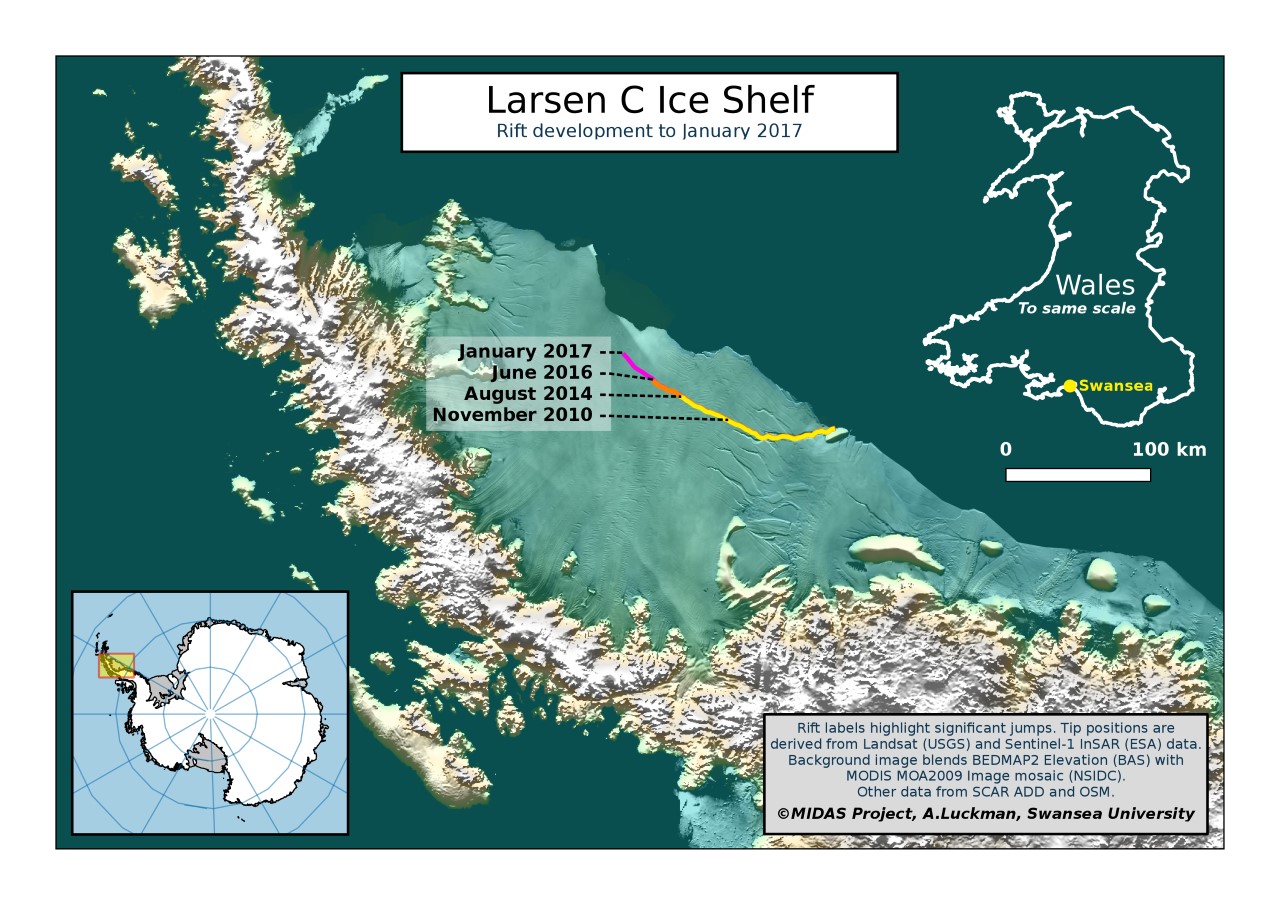Iceberg the Size of Delaware Could Soon Break Off Antarctic Ice Shelf
The breakaway could cause the whole 20,000-square-mile ice shelf to collapse.
— -- A massive chunk of ice about the size of Delaware could soon break off the Larsen C ice shelf in northern Antarctica.
A rift near the edge of the shelf "suddenly grew" late last year -- and now, only a small ice bridge about 12 miles long is keeping a nearly 2,000-square-mile chunk of ice from breaking off, according to an announcement on Thursday from Project MIDAS, a U.K.-based Antarctic research project.
When the Delaware-sized chunk of ice breaks away, the Larsen C ice shelf will lose more than 10 percent of its area, Project MIDAS said.
This "event will fundamentally change the landscape of the Antarctic Peninsula," it added.
The breakaway could happen "any month now," according to Project MIDAS researcher Martin O'Leary.
He told ABC News today that scientists are most concerned the breakage could cause the entire 20,000-square-mile ice shelf to destabilize and collapse.
"This is a massive feature that's thousands of years old and the size of a small country," O'Leary said. "One could say that no one lives there and no one cares, but I think it's alarming that, essentially, this piece of land and unique environment could just not be here anymore pretty soon."

O'Leary said that "quite a few ice shelves have collapsed in the last few decades," and climate warming and surface melt had driven many of those collapses.
However, he said that the crack threatening the Larsen C ice shelf edge "likely wasn't caused by climate change."
"Exactly how and when the rift began, we're not exactly sure, but we do know it started forming decades ago," he said. "When there's a small crack, it usually gets filled with snow and debris, which causes pressure to build and the crack to get bigger."
O'Leary added: "We definitely have seen, though, that Larsen C is experiencing changes from the changing and warming climate. We're seeing more surface melting and temperatures rising -- but whether this has affected the ice shelf's overall stability is not known yet."




